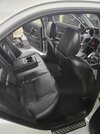The job of replacing the VVT is not a difficult undertaking. There are a lot of parts to remove to make access. I find Mazdas easy to work on, there always seems to be a way to get a tool in to do the job, but you cant be afraid to remove parts to get at what you want to work on. This is very apparent during the VVT process. I think the daunting part is the result if you dont hit all the marks 100%... maintaining TDC alignment & cleanliness during assembly are the key takeaways. If you can sequentially lay everything out in the order you removed or label/bag/record parts & fasteners.
We have some excellent resources by members on this forum that walk through the process.
the Roku way This is the pinnacle thread for replacing the VVT. Read through the entire thread a few times to familiarize yourself. Read SeeMeGovan's post thoroughly as well as he elaborates on some aspects.
Maximum Carnage JT has a great thread with lots of pics and info about assembling the VVT during engine build. I referenced this thread too.
I would suggest you donate and become a metal member. For a small fee this opens up access to Factory service manuals among other forum advantages.
This is a good community of people who are very invested in helping keep this unique aging platform alive. Dont be afraid to seek advice here, but heed the advice.
We have some excellent resources by members on this forum that walk through the process.
the Roku way This is the pinnacle thread for replacing the VVT. Read through the entire thread a few times to familiarize yourself. Read SeeMeGovan's post thoroughly as well as he elaborates on some aspects.
Maximum Carnage JT has a great thread with lots of pics and info about assembling the VVT during engine build. I referenced this thread too.
I would suggest you donate and become a metal member. For a small fee this opens up access to Factory service manuals among other forum advantages.
This is a good community of people who are very invested in helping keep this unique aging platform alive. Dont be afraid to seek advice here, but heed the advice.



